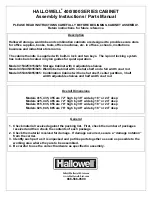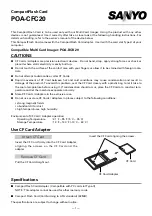
Chapter 5. Best Practices
41
Optimizing Performance
Following are a few tips to achieve optimal performance from RXT-150 and RXT
media.
Achieving Appropriate Transfer Speeds
The RXT-150 is designed to achieve transfer rates of up to 80 MB/sec when configured
as RAID 0 in an optimal environment (that is, with an optimal data source and optimal
performance from the server connected to the RXT-150).
Tests have shown that speeds up to 80 MB/sec are achievable in optimized
environments.
Due to different read and write processes that must occur for RAID 1, RAID 5, and
RAID 1+0, the transfer rates for these configurations vary. A reasonable expectation for
these RAID levels is 50 MB/sec; make sure that you are achieving at least this level of
throughput no matter what RAID type you are using.
Checking Block Sizes
The RXT-150 itself cannot be configured to alter performance; all performance tuning
must be done with your operating system and backup software. To maximize RXT-150
performance, Spectra Logic recommends using a 256KB block size (or larger) in your
backup application. Block sizes smaller than this may show decreased performance.
Note:
Block sizes larger than 256KB are not supported in Windows
operating systems with IBM drivers.
Note:
Block sizes should always be divisible by four (4).
Consult the documentation for your backup software for instructions on how to
configure the block size setting and other performance tuning options.
Enabling SCSI Disconnects
In most backup environments, SCSI disconnects are already enabled, which optimizes
backup performance. This setting should remain the same for RXT-150s, since
RXT-150s have substantially slower SCSI throughput if SCSI disconnects are disabled.
Consult your HBA’s user documentation for instructions on how to modify this option.















































